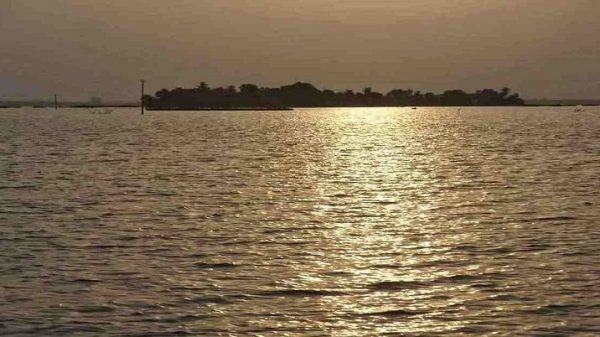Visit Chalan Beel at Natore in Bangladesh to pacify your soul

- Update Time : Saturday, October 3, 2020
- 200 Time View

Do you imagine yourself floating on a boat over a vast water body under the blue sky? Visit Chalan Beel to make your dream come true. Chalan Beel is an enormous inland water body that flows through several districts of Bangladesh. In different seasons Chalan Beel appears in unique splendor. During the monsoon season, this wetland turns into full to the brim stretching out to the horizon. While in autumn, the area of Chalan Beel is used for the cultivation of paddy. The mesmerizing green hue of this land turns into majestic golden fields during the harvest season of paddy. On the other hand, Chalan Beel gets dry out in the winter season leaving only a few patches of water in its central areas. Read this article to know how to visit Chalan Beel, what to see and when to visit.
History and Geography of Chalan Beel
It is a mystery why this vast wetland is called ‘Beel’ which refers to ‘marsh’. It is said that Chalan Beel had no existence about 2000 years ago. In fact, this area was a part of the Bay of Bengal. Over time, the sea moved to the south in a natural way. According to a British Gazetteer, the Bay of Bengal shifted over centuries, and Chalan Beel keeps the trace of the sea as a living memory.
Chalan Beel refers to the wide-ranging lowland region located in the lower Atrai basin. This wetland area spreads across several districts of Bangladesh including Chatmohar, Bhangura, and Faridpur Upazilas at Pabna District, Singra, and Gurudaspur Upazilas at Natore District, and Ullahpara, Raiganj, and Tarash Upazilas at Sirajganj District. This enormous wetland is conformed of a series of beels that are linked to one another through different channels that shape into a uniform vast water body during the monsoon season. Chalan Beel is formed by about 16 rivers, 39 smaller beels, 22 canals and countless ponds. This ‘Beel’ or marsh is hardly static. Perhaps this is why people call it ‘chalan’ or ‘moving’ beel.
Flora and Fauna of Chalan Beel
During the monsoon season, the Chalan been forms into an expansive water body that gets flourished by aquatic vegetation. People used to call Chalan Beel as ‘the haven of fish’. Back in time, huge amount of fish used to be caught from this beel and transported to the West Bengal region by train in order to please the aristocrats. Still today the local livelihood depends on this beel. The Chalan Beel is a natural abode of various kinds of fish including pabda, koi, rui, chanda, katla, boal, shing, chital, puti, magur, shoal, gojar, bain, tengra, tatkini, taki, bheda, etc.
What to See in Chalan Beel
In the old days, the Mughal and Pathan emperors used to visit Chalan Beel on their luxury boats for leisure tours. Those days are gone, and the time has moved forward. But still today, hordes of tourists visit Chalan Beel from all over the country and abroad to experience the awesome massiveness of this water body. Writers take inspiration from the cherubic nature. Tourists arrange picnics with freshly caught fish from Chalan Beel.
During a boat journey on Chalan Beel, you can enjoy the unforgettable natural beauty of majestic waves and the ripple of water. The vastness of this wetland would make you stop thinking about the stress and tensions of life and let you mingle with nature wholeheartedly.
Chalan Beel boat ride
Besides getting enthralled by the magnificence of crashing waves, there are many other things to experience at Chalan Beel. While the boat is passing beside the mainland, you can see the appealing lavishness of vast paddy fields. You would also enjoy the beauty of the rustic lifestyle of the general people of Bangladesh.
In this area, there are some popular places to visit, including Chatmohar Shahi Masjid, Rashik Mandir, Banwarinagar zamindar estate Faridpur, Jagannath temple, Radhagobinda temple, Shiv Mandir, Kunjaban Dighi, Mathura Dighi, Makarson Dighi, Ulipur Dighi, etc. What is more? You can learn more about this place from the Chalan Beel museum located at Gurudaspur in Natore district.















